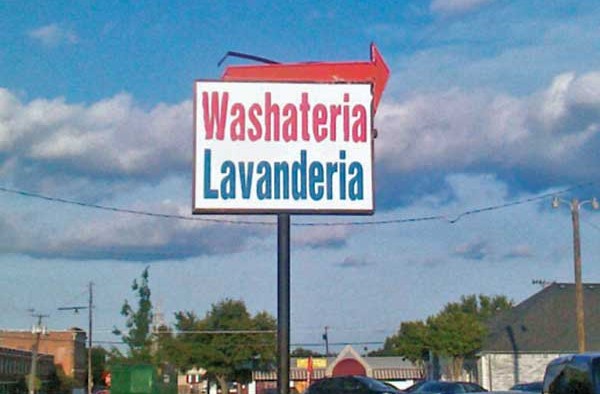 Humanities
Humanities
Spanglish Spoken Here

There’s no other way to say it: Spanglish is una lengua muy importante for getting by in the United States.
Believe it or not, the sentence construction above does not make Claudia Holguín Mendoza cringe. In fact, the assistant professor of Spanish welcomes the blending of the Spanish and English languages spoken by a growing number of Americans, not to mention Ducks.
Holguín Mendoza is tearing down stigmas and stereotypes associated with those who use Spanglish—chief among them, perhaps, that these speakers are somehow engaging in a lesser form of communication. She sees Spanglish as an important and rich linguistic practice in America, and she’s teaching a new course that redefines what it means to be bilingual.
In Spanglish (SPAN 248), students explore Spanish and its variations as integral to American culture. While teaching the course, Holguín Mendoza mixes English and Spanish, sometimes blending the two in sentences, sometimes in words (a favorite example of hers: “washateria,” for a laundromat).
It’s called code-switching—alternating between two or more languages in a single conversation. It can help one learn both languages, Holguín Mendoza says, and it’s done by most bilingual speakers the world over.
As America’s largest minority, the Hispanic population reached 55.4 million in 2014, or about 17 percent of the total population. That growth is reflected in Spanish classes at Oregon: two courses on Latino heritage have doubled in size since their inception in 2012.
Many of the students in these classes have a special history with Spanish: they’re “heritage learners,” with a personal or familial connection to Spanish. They’re typically US-born kids who hear Spanish at home and English everywhere else; although fluent in two languages, they’ve often been discouraged from using both.
“I was exposed to Spanish all my life, and I was always taught that there was a separation between Spanish and English,” said Yesica Meza, a major in Spanish and international studies. “But as I would talk with other students who were also exposed to Spanish and English, that wasn’t the case—we knew no separation. There was always that matter of if it was right or wrong for us to do that.”
For students such as Meza, Holguín Mendoza and colleagues in 2011 launched the Spanish Heritage Language Program, which serves heritage learners and others with courses on heritage, Spanglish, bilingual communities, and the role of Spanish in the media, the US, and the world. The program just got a vote of confidence from the College of Arts and Sciences, which is supporting additional courses for students who want to improve their reading and speaking Spanish without taking upper-division language courses.
“Students are spreading the word and saying, ‘You know, these Spanish classes are different, they don’t penalize you if you don’t speak standard Spanish,’” Holguín Mendoza said. “The goal is to make them aware of the richness of their culture and the skills they already possess. They should not feel embarrassed for speaking Spanish, and if they code-switch and someone looks at them, ‘Well, that’s the way I do it, this is being American.’ If they just realize that, you are changing a life. You are changing a person.”
With the program, Holguín Mendoza also hopes to reach non-Latino minorities and whites who appreciate the challenges facing minorities.
Helene Barkhuizen, a major in psychology and family and human services, places herself in that second group. With roots in South Africa, she said, “I get what it’s like to have separate identities.”
As an employee of Dutch Bros. Coffee, Barkhuizen enjoys switching to Spanish when serving Spanish-speaking customers—but occasionally, she has to switch back. She’s starting to realize there’s nothing wrong with that.
“I can hold a conversation with them in Spanish, but I will find myself speaking English, too—‘Do you want a straw?’” Barkhuizen said. “(Holguín Mendoza) is showing us that it’s okay to combine languages, to combine cultures, because that’s the reality of the United States and our world, in general.”
—Matt Cooper


 Twitter
Twitter Facebook
Facebook Forward
Forward